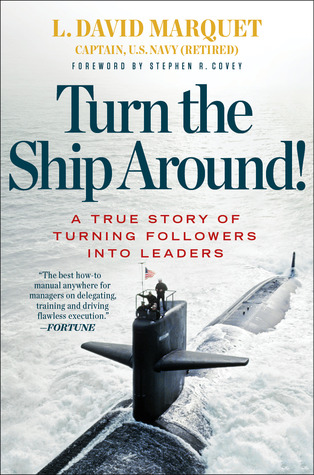More on this book
Community
Kindle Notes & Highlights
Read between
March 11 - May 5, 2023
When the performance of a unit goes down after an officer leaves, it is taken as a sign that he was a good leader, not that he was ineffective in training his people properly.
People who are treated as followers treat others as followers when it’s their turn to lead.
QUESTIONS TO CONSIDER In your organization, are people rewarded for what happens after they transfer? Are they rewarded for the success of their people? Do people want to be “missed” after they leave? When an organization does worse immediately after the departure of a leader, what does this say about that person’s leadership? How does the organization view this situation? How does the perspective of time horizon affect our leadership actions? What can we do to incentivize long-term thinking?
Are you asking questions to make sure you know or to make sure they know? Do you have to be the smartest person in your organization? To what degree does technical competence form the basis for leadership? Is that technical competence a personal competence or an organizational competence?
Is there a call to action in your organization? Do people want to change, or are they comfortable with the current level of performance? Are things too comfortable? Is there a feeling of complacency? Do people take action to protect themselves or to make the outcome better? Does leadership in your organization take control or give control?
ACHIEVE EXCELLENCE, DON’T JUST AVOID ERRORS is a mechanism for CLARITY. (The book to read is Simon Sinek’s Start with Why.)
Here is a short list of “empowered phrases” that active doers use: I intend to . . . I plan on . . . I will . . . We will
What causes us to take control when we should be giving control? Can you recall a recent incident where your subordinate followed your order because he or she thought you had learned secret information “for executives only”? What would be the most challenging obstacle to implementing “I intend to . . .” in your place of business? Could your mid-level managers think through and defend their plan of action for the company’s next big project?
An effective survey question to ask your employees is how many minutes a week they spend learning on their own, not mandated, not directed. Typically it’s a small number. An organizational measure of improving health would be to increase that number. If you want engaged teams, don’t brief, certify!
How do you shift responsibility for performance from the briefer to the participants? How much preparation do people do prior to an event or operation? When was the last time you had a briefing on a project? Did listeners tune out the procedures? What would it take to start certifying that your project teams know what the goals are and how they are to contribute to them? Are you ready to assume more responsibility within the leader-leader model to identify what near-term events will be accomplished and the role each team member will fulfill?
When is it right for the leader to overturn protocol in the effort to rescue a single stressed-out subordinate? What messages do you need to keep repeating in your business to make sure your management team doesn’t take care of themselves first, to the neglect of their teams?
Specify Goals, Not Methods
SPECIFYING GOALS, NOT METHODS is a mechanism for COMPETENCE.
SPECIFYING GOALS also served as a mechanism for CLARITY by focusing on achieving excellence rather than avoiding errors.
Provide your people with the objective and let them figure out the method.
How can you ensure adherence to procedure while at the same time ensuring that accomplishing the objective remains foremost in everyone’s mind?
As more decision-making authority is pushed down the chain of command, it becomes increasingly important that everyone throughout the organization understands what the organization is about. This is called clarity, and it is the second supporting leg—along with competence—that is needed in order to distribute control.
Clarity means people at all levels of an organization clearly and completely understand what the organization is about. This is needed because people in the organization make decisions against a set of criteria that includes what the organization is trying to accomplish. If clarity of purpose is misunderstood, then the criteria by which a decision is made will be skewed, and suboptimal decisions will be made.
Achieve excellence, don’t just avoid errors (this was introduced in chapter 7). Build trust and take care of your people. Use your legacy for inspiration. Use guiding principles for decision criteria. Use immediate recognition to reinforce desired behaviors. Begin with the end in mind. Encourage a questioning attitude over blind obedience.


